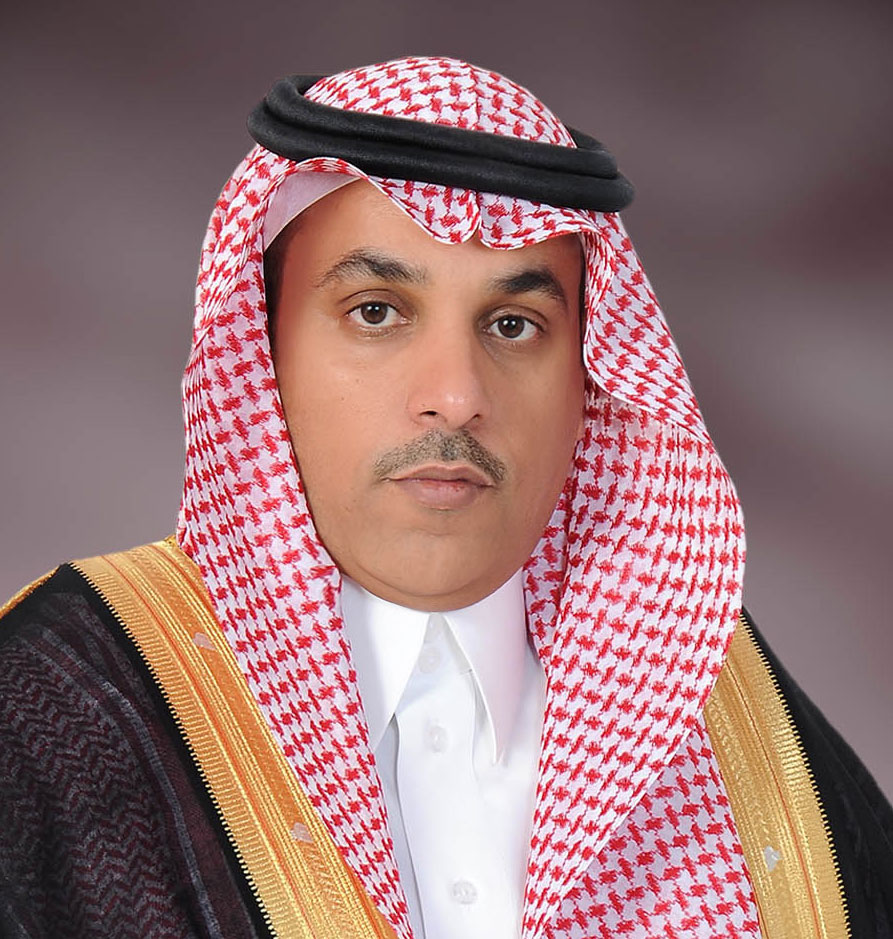
طويق وحكاية أربع سنوات في عهد "سلمان"
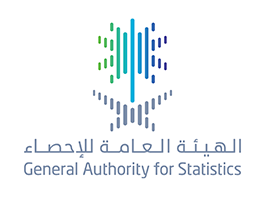
"الهيئة العامة للإحصاء " تصدر نتائج مسح الطاقة المنزلي عام 2018م
“GASTAT” Releases the Results of the Household Energy Survey for 2018
The General Authority for Statistics (GASTAT) released the results of the “Household Energy Survey (2018)” on its official website www.stats.gov.sa. It is a field survey that collects household energy data from a sample of households covering all 13 administrative regions across the Kingdom. This data can calculate many estimates and indicators about energy consumption in the domestic sector. The Household Energy survey aims at providing data related to the housing characteristics such as the type of housing, its components, the areas that are air-conditioned and heated, the impact of economic, social and geographical variables on energy consumption, household uses of fuel of all kinds to supplement the primary consumption coverage of various energy forms, which contributes to the preparation of energy balance, identifying patterns of energy consumption and the forms of energy used in the domestics sector.
The results of the household energy survey showed that (100%) of the households use electricity in their houses. (99.85%) of their houses are connected to the public electricity network. (0.11%) use a private network as a source for electricity, while (0.04%) use a generator as a source of electricity.
The results also showed that the percentage of households using solar energy at homes reached (1.45%).
The results also showed that the percentage of households using an independent electric meter reached (84.33%), while (15.67%) are using an electric meter shared with other houses, whereas (15.38%) use power regulator at home.
Regarding the use of fuel, the results showed that about (90.72%) of households use gas as the main fuel for cooking, while (8.74%) of households use electricity for cooking. In addition, (8.22%) of households use (wood, coal and agricultural waste) at home for heating and cooking.
Regarding the patterns and behavior of households in the rationalization of power consumption, the results showed that (59.84%) of households are interested in 65cutting expenses or
rationalization of power consumption. It also showed that (35.75%) of the households are likely interested in power consumption rationalization while only (4.41%) of the
households are not interested at all in cutting expenses or rationalizing power consumption. The results showed that (29.35%) of the households have power savers at their houses while (70.65%) of households don’t have power savers to rationalize consumption
Furthermore, the results of the Household Energy Survey showed that the total consumption of household fuel (fuel oil), kerosene and LPG reached more than 1 billion liters (1,023,585,906) in all regions of the Kingdom. The volume of consumption of diesel (fuel oil) reached about (3,519,261) three million five hundred thousand liters, which represents about (0.34%) total consumption volume, while the consumption of gas (kerosene) reached more than nineteen million L (19,691,996) representing about 1.92% of the total volume of consumption. The volume of consumption of gas (LPG) reached about one billion liters (1,000,374,649) in 2018, representing (97.74%) of the total volume of consumption.
The results of the Household Energy Survey showed that (35.14%) of households in the Kingdom spend less than 5% of their income on electricity and other sources of fuel, while (43.08%) of the households spend between (5-10%) on energy, while (15.76%) of households spend between (11-15%) on energy. (4.01%) of households spend between (16-20%) of their income on energy and (2%) Spends more than (20%) of its income on electricity and other fuel sources.
It is worth mentioning that the Household Energy Survey of 2018 is the second survey conducted by the General Authority for Statistics on an annual basis.
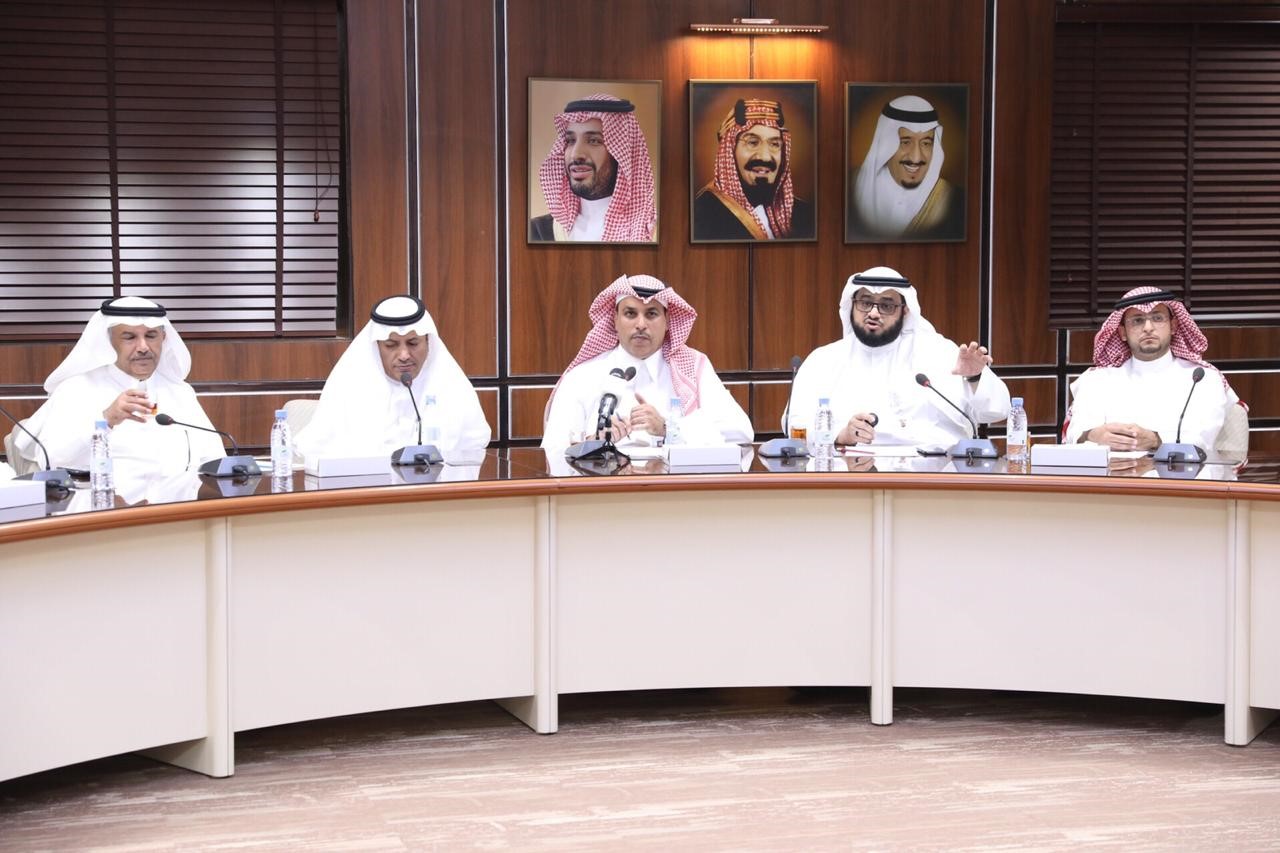
الهيئة العامة للإحصاء تختتم أسبوعها الاحصائي بمنطقة عسير
Within GASTAT efforts to raise statistical awareness among all society classes.
GASTAT concludes its awareness week in Aseer region
As part of its plan to raise statistical awareness among all society classes, the General Authority for Statistics (GASTAT) concluded the statistical week in Aseer region. The statistical week included the meeting of His Excellency the president of GASTAT, Dr. Fahad bin Sulaiman Altekhaifi with businessmen and the board members of Abha Chamber. During the meeting, they discussed the role of the private sector in the statistical process, in addition to the statistical products that are related to Aseer region.
“The Smart Statistician” exhibition has been also held during the statistical week in cooperation with the General Administration of Education in Aseer region. The exhibition events took place in “ Aseer’s Educational Center” during the period 17-21 Rabi Al Awal 1440H, with the participation of more than 35 schools.
The exhibition aims to clarify the role of statistics in the student life. In addition, it aims to explain the statistical concepts and raising the level of students’ awareness. Moreover, it presents the statistical process steps and stages in a simple and scientific way, and enhances the student’s realization of the statistician role. However, the exhibition demonstrates the impact of data accuracy (data provided by the household head) on development, as the student is considered an effective method in raising households’ awareness.
It is worth mentioning that the student journey inside the exhibition starts by moving between the different sections that provide students with scientific information in an entertainment and attractive way. The sections include an identification of statistics, the difference between statistics and mathematics, the role of the General Authority for Statistics, how students and households are relating to the authority work, and how statistical researches are implemented on the field through simulating the process by students, where a student takes the role of the “statistician” when he visits a household to fill an electronic form designed especially for the research. However, many awareness lectures were held in Khamis Mushait governorate during this week an attended by a number of the governorate schools’ students.
On the other hand, King Khalid University hosted the event of (We share you your academic journey) during the same period. This event targets university students, faculty members, and all university staff. It presents GASTAT statistical products and services, and explains how to use them for the purpose of conducting academic studies and research.
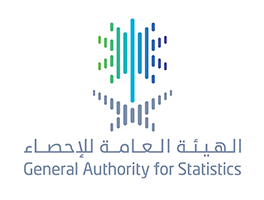
الهيئة العامة للإحصاء: انخفاض المؤشر الشهري للرقم القياسي لأسعار المستهلك خلال شهر أكتوبر 2018م وارتفاع المؤشر السنوي.
GASTAT: Consumer Price Index (CPI) Decreases and Annual Index Rises in October,2018
General Authority for Statistics GASTAT released its monthly report of CPI in Saudi Arabia for October. The report was published on its official website www.stats.gov.sa . The Consumer Price Index CPI decreased 0.3% in October compared to the previous month (September 2018).
GASTAT report showed that the Consumer Price Index CPI in Saudi Arabia decreased to (106.8) Index Points in October from (107.1) in September of 2018 with 0.3% change.
On the other hand, the report attributed the monthly decline of the index to the declines of the eight sections composing it, which are: housing, water, electricity and gas section with 0.8% , home furnishing and equipment section with 0.4%, clothing and shoes section with 0.3%, transportation section with 0.3%, personal goods and services section with 0.2%, health section with 0.1%, culture and entertainment section with 0.1%, and finally restaurants and hotels sections with 0.1%.
In contrast, two of the main sections witnessed an increase, which are: food and beverages section with 0.2% and tobacco section with 0.1%. Telecommunication and education sections remained stable with no change.
The year-over-year (YOY) of CPI registered an increase of 2.4% in October 2018 compared to the same month last year reaching (106.8) in October 2018 compared to (104.3) in October 2017.
The ten sections composing the CPI contributed to year-over-year increase, which are: transportation section 11.5%, tobacco 10.2%, restaurants and hotels 8.7%, food and beverages 7.3%, health 4.0%, culture and entertainment 3.2%, home furnishing and equipment 2.8%, telecommunication 1.4%, education 0.2%, personal goods and services 0.1%.
On the other hand, two of the main sections witnessed a decline, which are: clothing and shoes section with 5.0% as well as housing, water, electricity and gas section with 3.6%.
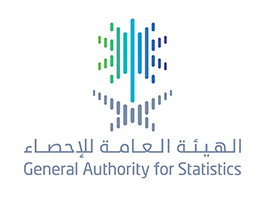
"الإحصاء" تُصدر نتائج مسح التجارة الداخلية للربع الثاني من عام 2018م
Number of Saudi Females Workers Increased in Internal Trade Activity
GASTAT Releases Internal Trade Survey Results Q2- 2018
The General Authority for Statistics (GASTAT) released on its official website www.stats.gov.sa the results of the "Internal Trade Survey for the Second Quarter of 2018". The survey is defined as a set of economic statistics and data that can be used for short-term to measure the performance of the trade sector in order to assess its growth, and identify its strengths or weaknesses.
Moreover, it is an important economic activity that contributes to expand employment and raise GDP, exactly like the retail activity. This activity connects producers with consumers, and focusses on the features and components of establishments engaged in the activities of vehicles sale and repair as well as wholesale and retail sale trade.
The survey showed that the number of Saudi females workers of the internal trade activity establishments increased by 2%, compared to the previous quarter. The workers’ number of internal trade sector in Saudi Arabia reached about one million six hundred eighty-five thousand workers by the end of the second quarter of 2018, including almost one million two hundred fifty thousand non-Saudi workers. However, the number of Saudi workers of the same sector was approximately four hundred thirty-four thousand workers.
The employees of the retail trade made up (1,054,460) one million, fifty-four thousand, four hundred sixty workers, including (771,650) seven hundred seventy-one thousand, six hundred fifty non-Saudi workers. However, the number of Saudi employees in this activity was (282,810) two hundred eighty-two thousand, eight hundred ten workers, the survey showed.
The results of the survey also indicated that the total operating revenues(sales) of the internal trade sector during the second quarter of the current year 2018 amounted to around (148,987 million) one hundred forty-eight thousand, nine hundred eighty-seven million riyals. Nonetheless, the total operating expenses of the sector during the same period recorded about (89,312 million) eighty-nine thousand, three hundred twelve million riyals. Therefore, the operating surplus of the three sector activities during the first quarter of 2018 was about (48,052 million) forty-eight thousand, fifty-two million riyals.
Based on the data of the survey, the operating surplus of the wholesale trade was the highest among all the activities of the internal trade, where its number was about (18,928 million) eighteen thousand, nine hundred twenty-eight million riyals during the second quarter of the current year 2018. On the other hand, the operating surplus of the retail trade activity reached around (15,72million) one thousand, five hundred seventy-two million riyals. Finally, the operating surplus of the sale and repair of motor vehicles and motorcycles activity accounted to almost (13,401 million) thirteen thousand, four hundred one million riyals.
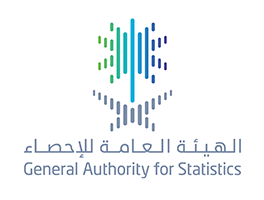
" الإحصاء ": متوسط الأجر الشهري للمشتغلين السعوديين في أربعة قطاعات : 10.238 ريال
Included the whole salary “basic, allowances, bonuses, overtimes, and other compensations”
GASTAT: Saudi Workers Monthly Average Wage in Four Sectors: 10.238 SAR
The General Authority for Statistics (GASTAT) spokesman, Taiseer Almofarrej said that according to the labor market bulletin of the second quarter, 2018, the average monthly wage of Saudi workers who get paid for their work in four sectors; public sector, private sector, non-profit organizations, international and regional agencies, and other sectors reached (10.238) SAR. Regarding the calculation method of this average, Almofarrej stated that it was measured based on estimating the average wages of all Saudis (males and females) in the above mentioned four sectors either inside Saudi Arabia or outside it, in addition to the wages of workers in other sectors which were taken from the field survey that GASTAT conducts quarterly by asking households about their monthly wages.
Almofarrej indicated that the wages about which households are asked differ from the wages registered in the administrative records of the different sectors, where the head of the household disclose the monthly wage for any work which may not include a job salary or any related allowances or bonuses. However, Almofarrej said that the average wages of Saudis (males and females) who work in these sectors registered (11.198 SAR) in the public sector, (7.339 SAR) in the private sector, (4.750 SAR) at non- profit organizations, and (16.257 SAR) in the other international and regional agencies and sectors.
As for the difference between the statistics issued by GASTAT and the ones issued by other entities such as GOSI, Almofarrej illustrated that the statistics issued by GOSI represent the basic salary average registered by the employer. They do not include any additions such as allowances, compensations, or bonuses. Therefore, it is normal to have an average that is less than the average derived from the answers of households’ heads in the field survey based on which GASTAT issue its statistics.
Regarding the reasons why the Bulletin of the labor market revealed statistics that were not shown in previous years, Taiseer Almofarrej confirmed that what was issued earlier is the results of the Labor Force Survey, this is the results of the fieldwork that GASTAT conducts every quarter. Since the results of the fourth quarter of 2016, GASTAT has begun to issue a more comprehensive release under the name "Bulletin of the labor market." What distinguishes the bulletin is that it is an integrated work between government institutions (the General Authority for Statistics, the Ministry of Labor and Social Development, the Ministry of Civil Service, in addition to the National Information Center (NIC), the results of the field survey and the registered data provide a panoramic and comprehensive picture of the labor market. As a result of this statistical integration, the Bulletin contains a large number of detailed data on employees according to the rules and regulations to which they are subject, Gender, age, administrative region, and educational level. It also includes data of jobseekers, average monthly wages, working hours, and domestic workers. The aim is to support policy and decision makers.
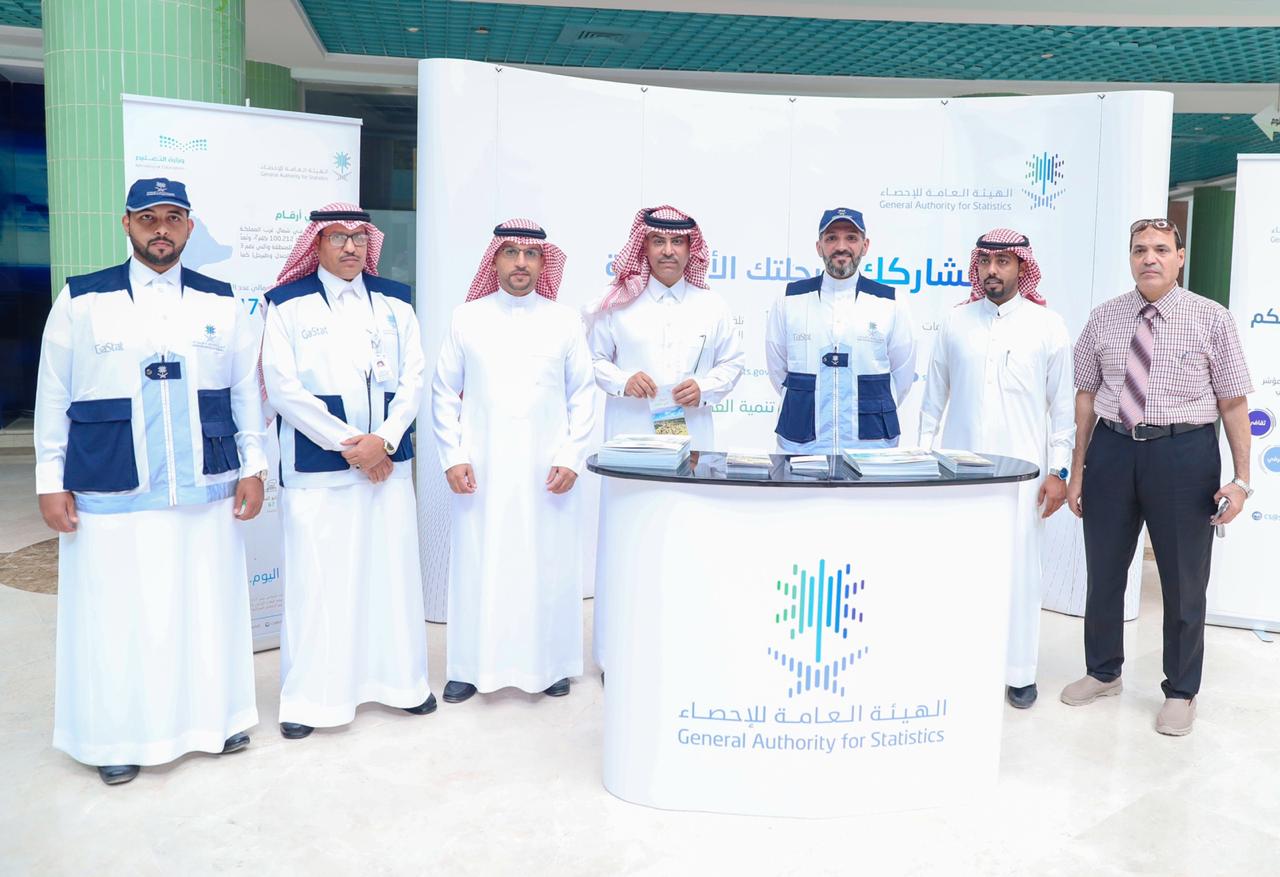
الهيئة العامة للإحصاء تطلق أسبوعها التوعوي لطلبة التعليم العام والعالي بمنطقة الجوف
GASTAT Launches its Awareness Week for Students of General and Higher Education in Al-Jouf Region
As part of its plan to raise statistical awareness among all segments of the society, including the students of general education and higher education, the General Authority for Statistics (GASTAT) organized the "Smart Statistician" exhibition in cooperation with the General Directorate of Education in Al-Jouf Region. The exhibition will be held at Al-Sudairiya School in Sakaka city, during the period from 20th to 24th of Muharram 1440 AH, where more than 70 schools from the region were invited to visit and participate.
The exhibition, which is intended for students in the upper grades of the primary and intermediate levels, aims to highlight the importance of statistics in the life of the student, introduce the most important concepts related to statistics, help students in reaching a high level of awareness of the importance of statistics, as well as the steps and stages of the statistical process in a scientific and exciting way. In addition, it enhances the students' understanding of the role of statistical systems, the statistical field researchers and the impact of the accuracy of data provided by (households and establishments) on development in all its fields, considering that the student is an influential media in the family as he transfers everything that he learns in school to his family.
The exhibition starts its activities with an introductory video. The student will begin to move among the sections that contain scientific information presented in a fun and entertaining way by learning about statistics, the difference between statistics and mathematics, the role of the General Authority for Statistics, how to carry out field statistical research through a practical experiment conducted by the student by playing the role of a "statistical researcher" and visiting a household using the electronic form of field research, to simulate the reality of statistical researcher.
The exhibition, which opens from 9 am to 1 pm during the week, includes a number of shows and competitions, such as the competition of regions and numbers, which aims to identify the population of the regions, the statistical signs competition, which aims to enhance the student's understanding of its importance in the census and statistical surveys in general.
On Wednesday, Muharram 23rd, 1440 AH, GASTAT will also present a lecture on the importance of statistics hosted by Dumat Al-Jandal Intermediate School in the presence of a number of students from the governorate schools. On the other hand, in the same period, Al-Jouf university will hold the event of (We are with you in your academic trip). In this event, an awareness booth will be set up to introduce all university students, faculty members and employees at the university with GASTAT products, statistical services and how to obtain them and benefit from them in research and academic studies. The event will conclude with an awareness lecture to be held at the University Theater on Thursday, 24th of Muharram, during which the students will be introduced with the role of the college student in the development as well as their role in spreading of awareness among the society.
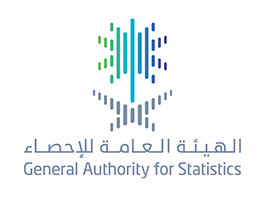
الهيئة العامة للإحصاء: ارتفاع الرقم القياسي العام للإنتاج الصناعي للربع الثاني 2018م
GASTAT: Index of Industrial Production Increased during the Second Quarter of 2018
On its official website www.stats.gov.sa , GASTAT released the results of the industrial production survey for the second quarter of 2018. This survey measures the relative change or any developments in the quantities of commodities and material production.
The survey results indicated an increase by 4.17% in the industrial production index during the second quarter of 2018, compared to the first quarter of the same year. The index registered 137.87 points during the second quarter, 2018.
As for the industrial production index activities, the mining and quarrying indicator rose by 1.89%, whereas the manufacturing production increased by 5.07%. However, the production of the electricity and gas supply registered an increase with 83.46% when compared to the first quarter of 2018.
The results also showed an increase by 5.84% in all industrial activities compared to the second quarter of 2017. The growth in mining and quarrying production reached 1.95%, while the manufacturing production growth registered 16.44%. However, the production of electricity and gas supply decreased by 0.30%.
In this context, industrial production means transforming raw material (inputs) into consuming material in its final shape as (outputs) so that the producing establishment may gain a profit in return. On the other hand, the extractive industries mean raw material extracted from the ground. They depend on non-renewable natural resources such as oil and mining. However, manufacturing concerns all industries whose activity is all about transforming raw material into final products or intermediate products.
It is worth mentioning that the idea of index means the measurement of any change in a given value during a specific period of time called the comparison period which compares the values during different periods of times. The Industrial Production Index is considered the fourth statistical product that GASTAT conducts as an index. It is conducted after Consumer Price Index, Wholesale Prices Index, and Real-estate Prices Index.
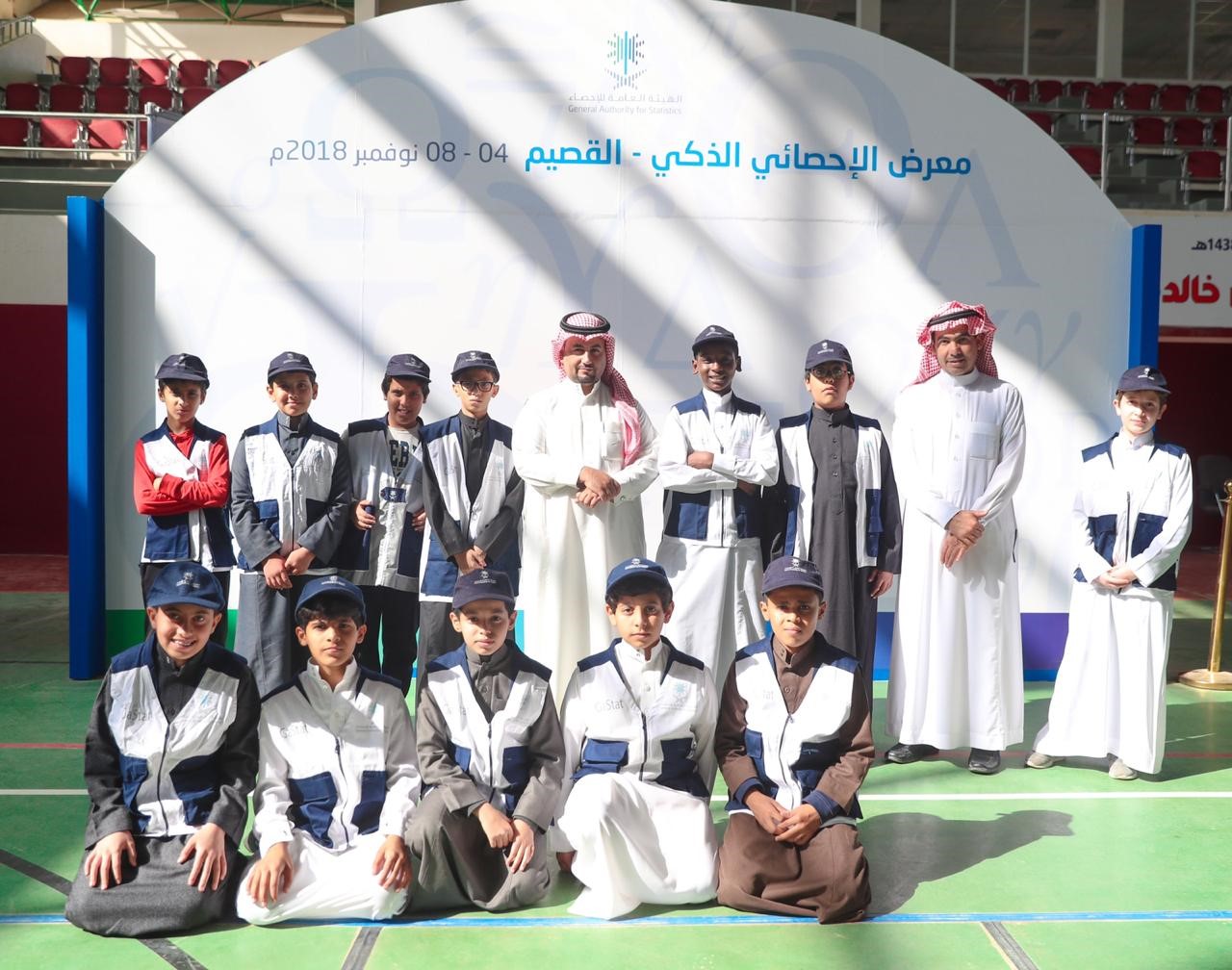
طلاب وطالبات القصيم يشاركون في معرض الإحصائي الذكي
Within GASTAT’s plan to raise statistical awareness among all society classes
Qassim's Students Participate in Smart Statistician Exhibition
The General Authority for Statistics (GASTAT), in cooperation with the General Directorate of Education in Qassim, organized the “Smart Statistician Exhibition” as a part of its plan to raise statistical awareness among all society classes, including the students of general and higher education. The exhibition was held at the student’s house in Buraydah Region during the period 26-29 Safar, 1440H with participation of more than 30 schools in the region to visit and participate.
The exhibition targeted the students in the higher classes of primary and intermediate school. It aims at clarifying the role of statistics in the life of students, in addition to explaining the statistical concepts, and raising the level of students’ awareness. Moreover, it presents the statistical process steps and stages in a simple and scientific way, and enhances the student’s realization of the statistician role. However, the exhibition demonstrates the impact of data accuracy provided by (establishments and households) on development, as the student is considered an effective method in raising households’ awareness.
In the beginning of the exhibition, the students were asked to view an introductory video featuring statistics in general, then they visited the sections of the exhibition which contain significant information presented in an entertainment way. The sections include information on the difference between statistics and mathematics, GASTAT’s role, and the role played by the student and household in the Authority’s work. Additionally, the students learned the procedures of conducting filed statistical research through a practical experiment, where the student embodied the role of the “statistician”, and visited a household using an electronic form of field research in order to simulate the reality of being statistician.
The exhibition opens from 9:00 am to 1:00 pm during weekdays. It involves a number of competitions, such as “Regions and Numbers Challenge”, to know the number of the region’s population, and the competition of “Statistical Signs” to boost the student's understanding of the importance of such signs in conducting census and statistical surveys.
GASTAT also gave an awareness lecture on the importance of statistics hosted by the Department of Education in Unayzah Region in the presence of many students of governorate’s schools. However, during this week, Qassim University hosted the event of (We Share You Your Academic Journey) which targets university students, faculty members, and all university staff. This event presents the statistical products and services of the Authority, and explains how to use them to conduct academic studies and research.
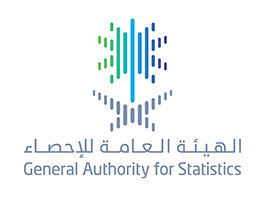
الهيئة العامة للإحصاء: ارتفاع عدد المشتغلين السعوديين في منشآت القطاع الخاص بنسبة 5.7%
GASTAT: Number of Saudi Workers Working at Private Establishments Rose to 5.7%
On Wednesday 29/2/1440 H corresponding to 7/11/2018 , GASTAT released the results of the “Economic Indicators Survey (Q2, 2018)” on its official website www.stats.gov.sa . The results provide short-term indicators about the number of workers by gender and nationality as well as the paid compensations, operating expenses and operating revenues as a periodical study that focuses on the features and the components of the working institutions practicing one economic activity or several economic activities in public and private sectors.
The results of the survey showed that the total number of workers working at private establishments increased by 3.6% compared to the same quarter of 2017. It also showed an increase of 5.7% in the total number of Saudi workers working at private establishments compared to the same quarter of 2017.
In addition, the total paid compensations of workers working at private establishments rose to 8.9% compared to the same quarter of 2017, results showed.
According to the survey’s results, the total operating expenses of private establishments increased by 10.2% compared to the same quarter of 2017. The total operating revenues of private establishments also increased by 9.9% compared to the same quarter of 2017.
Economic indicators are a set of economic statistics and data which can be used as a short-term plan to measure the performance of the various economic sectors in order to evaluate the economic situation and to identify the strengths and weaknesses of economy.
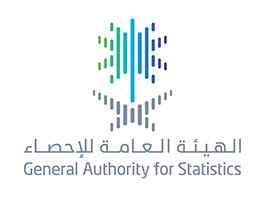
الإحصاء: ارتفاع في نصيب الفرد من الناتج المحلي الإجمالي والحساب الجاري لميزان المدفوعات ومؤشر الادخار الإجمالي للربع الثاني لعام 2018م
Three Economic Indicators Suggest an Economic Growth
GASTAT: Per Capita GDP, Current Account of the Balance of Payments and Total Savings of the 2nd Quarter of 2018 Increased
On its official website www.statts.gov.sa , GASTAT published three economic indicators which are: GDP per capita for the 2nd quarter (2018), the surplus or deficit in the current account of the balance of payments for the 2nd quarter (2018), and the total savings index for the second quarter of 2018.
Furthermore, per capita share at current prices reached (21.997) riyals with an increase of (14.91%) compared to the 2nd quarter of 2017. On the other hand, GDP per capita reached (22.272) riyals for the 2nd quarter of 2018 with an increase of (14.20%) compared to the same quarter of the previous year.
The above-mentioned indicator reflects the individual’s ability to obtain consuming goods and services, shows the average income per capita in Saudi Arabia on a quarterly basis, also it can be used to measure the economic development around the world and to compare between countries as well, GASTAT clarified.
In regard to surplus and deficit in current account for the 2nd quarter of 2018, the current account indicator of the balance of payment achieved a surplus amounted to (9.82%) to GDP during the 2nd quarter of 2018; and the deficit was (3.24%) in the current account of the balance of payments in the 2nd quarter (2018).
GASTAT also published the total savings indicator for the second quarter of 2018 where it reached 242 billion and 497 million riyals with an increase of (29.13%) compared to the same period last year 187 billion and 793 million riyals. The total savings rate to GDP edged up to (33.09%) in the 2nd quarter of 2018 compared to (30.18%) in the same period of the previous year.

انعقاد الاجتماع الثالث لِلَّجنة التنسيقية الدائمة بمشاركة 17 جهة حكومية
To develop the statistical departments
The coordination committee is holding its third meeting with 17 governmental entities
The third meeting of the coordination committee was held on Wednesday 21/2/1440H corresponding 31/10/2018 at the General Authority for Statistics (GASTAT) head office to facilitate the exchange of data and information with various government agencies.
The official spokesman of the General Authority for Statistics (GASTAT), Taiseer Almofarrej, explained that the coordination teams discussed several topics, including the program of developing the statistical departments which aims at establishing organizational rules and fundamentals to found statistical departments in the governmental entities. Furthermore, it aims to build an official statistical system and to make the statistics, information, and indicators basic parts of the governmental work to enhance the quality of statistical work in Saudi Arabia. The mechanism of classifying government statistical units was also discussed in the meeting. Moreover, the committee reviewed the statistical works carried out during the last period.
On the other hand, Almofarrej said that the coordination committee of the General Authority for Statistics includes a number of representatives including the Saudi Arabian Monetary Agency , General Authority for Investment, Ministry of Health, Ministry of Environment, Water and Agriculture, Saudi Customs, Ministry of Housing, Ministry of Trade and Investment, Ministry of Education, Ministry of Justice, Ministry of Municipal and Rural Affairs, Ministry of Finance, Ministry of Energy, Industry and Mineral Resources, Ministry of Communications and Information Technology, Ministry of Labor and Social Development, National Information Center, Ministry of Economy and Planning, and Saudi Post.
It is worth mentioning that the coordination committee was formed permanently to coordinate the statistical work between the General Authority for Statistics and related entities, in accordance with the Ministers Cabinet resolution number (11) dated 13/1/1437 H of the authority organization, which aimed at activating and organizing the statistical work through the establishment of a comprehensive, accurate and unified statistical system, in addition to the follow-up of its implementation. It also develops the plans and programs necessary for fulfilling statistical needs; in order to serve the developmental plans, scientific research, and other activities.
GASTAT: Real-Estate Prices Index Decreased During Q3, 2018
The index includes housing, commercial and agricultural sectors
GASTAT: Real-Estate Prices Index Decreased During Q3, 2018
The General Authority for Statistics (GASTAT) released the report of Real Estate Price index for the third quarter, 2018 on the official website of the Authority www.stats.gov.sa
The real-estate price index has recorded a decline by (1.6%), compared to the previous quarter Q2 2018, where the indicator of the real estate price index reached (82.3) in the third quarter of 2018, compared to (83.6) in the second quarter of 2018. This decline can be attributed to the decrease in the main sectors composing the indicator: the housing sector (2.1%), the commercial sector (0.5%), and the agricultural sector (0.1%) compared to the second quarter of the current year.
At the level of the housing sector, the third quarter of 2018 witnessed a decline in residential lands by (2.1%), compared to the previous quarter, where the villas, apartments and houses decreased by (1.4%), (2.0%), and (0.3%) respectively. On the other hand, residential buildings increased by (0.2%). Regarding the commercial sector, commercial plots decreased by (0.5%), compared to the previous quarter. However, the agricultural sector witnessed a decrease by (0.1%) in agricultural lands.
Additionally, the index is based on the data records about real-estate’s transactions available at the Ministry of Justice, and it is an important tool to support economic and statistical decision makers regarding the changes of property prices and future forecasts during different periods of time. The index has three main sectors consisting of several types of real estate: housing sector which includes the following (plot of land, building, villa, apartment and house), commercial sector includes (plot of land, building, exhibition/ shop or commercial center), and the agricultural sector with only one category which is the agricultural land.
It is worth mentioning that the real estate price index aims at finding accurate real estate statistical indicators that measure real estate market in Saudi Arabia according to universally recognized scientific norms and standards, and filling the gap of data in real estate sector. It is considered an essential tool to support entities which make economic decisions in this field, and to contribute to a development process in the real estate sector in order to achieve the vision of 2030.
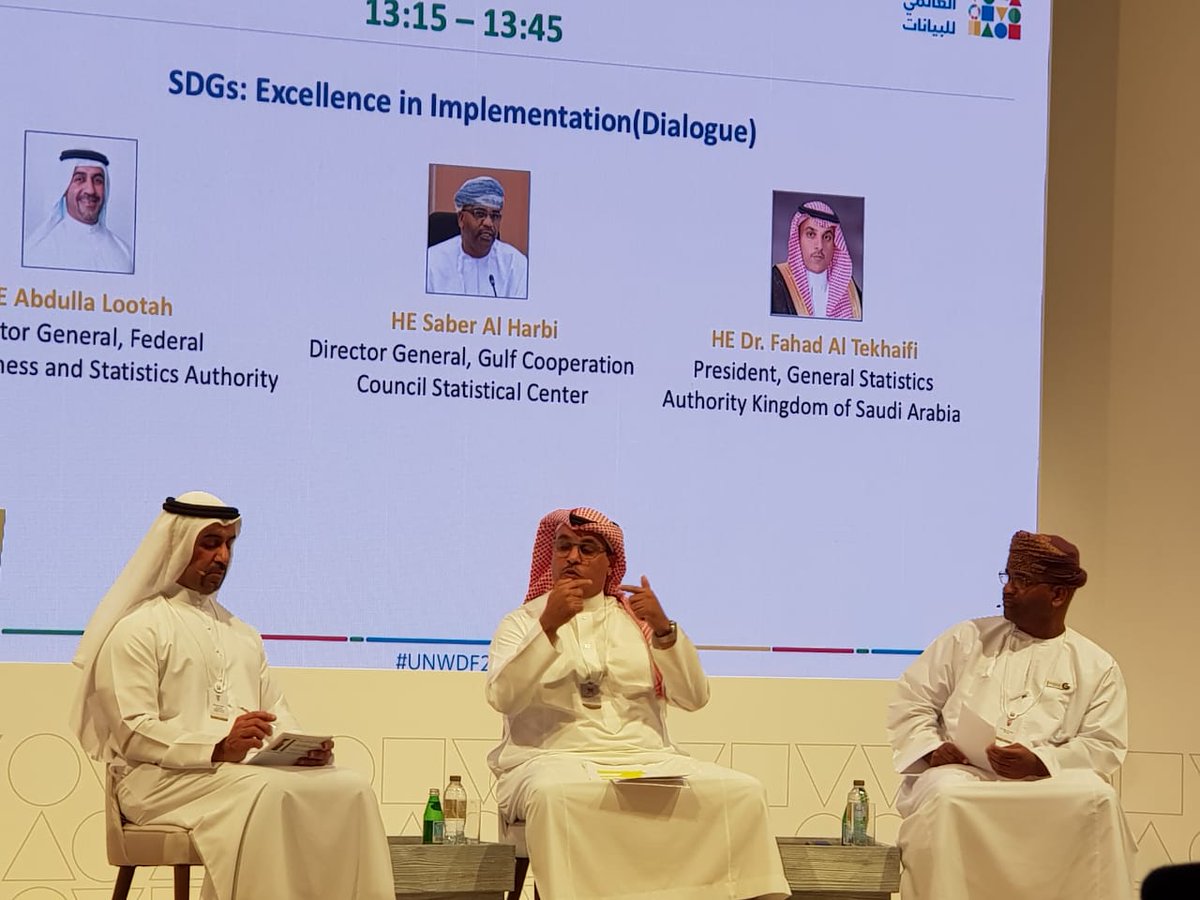
التخيفي: المملكة تسعى لتكون من أوائل الدول عالميًا في تحقيق أهداف التنمية المستدامة من خلال بناء مؤشرات إحصائية وتطوير سياسات تنموية
During the Second UN World Data Forum
Al Tekhaifi: Saudi Arabia seeks to be one of the first countries in the world to achieve the Sustainable Development Goals through building statistical indicators and creating development policies
The General Authority for Statistics (GASTAT) concluded its participation in the second United Nations Data Forum hosted by the United Arab Emirates from 22 - 24 October 2018, under the patronage of H.H. Shaikh Mohammed bin Rashid Al Maktoum, the Vice President and Prime Minister of the United Arab Emirates and the Ruler of Dubai. The forum was held with the participation of a group of leaders, decision-makers and more than 2500 experts and specialists in the field of data from more than 120 countries in the world.
H.E. Dr Fahad Al Tekhaifi, the President of the General Authority for Statistics, congratulated the Federal Competitiveness and Statistics Authority in the United Arab Emirates on the success of hosting this international statistical event. He praised the achievement of the session’s goals through the wide participation of the countries, organizations, government systems, and research and academic society. Al Tekhaifi stressed that the participation of GASTAT in the UN World Data Forum of 2018 – which is held for the first time in the Gulf region in Dubai – comes within GASTAT plan to benefit from the best international practices in the data field, communicate with the international organizations and strengthen the partnerships with them. In addition, the topics of the forum are one the important topics for all statistics systems especially in view of the transformation in the region from depending on gas and oil to an economy based on diversity for a sustainable development. The three-day forum discussed the exploitation of the information revolution for a sustainable development. Moreover, the forum discussed improving the use of data and statistics to achieve change towards a better future for human societies in line with the Sustainable development goals 2030.
GASTAT president pointed that Saudi Arabia presented its first voluntary national report at the high-level political forum concerned with the sustainable development last July at the UN headquarters in New York despite it being voluntary, believing in the importance of pioneering in sustainable development for the national, regional and global transformation. Saudi Arabia has made rapid progress in achieving the goals of sustainable development, which confirms the keenness of the leadership on this, led by the Custodian of the Two Holy Mosques King Salman Bin Abdul Aziz Al Saud, His Royal Highness Prince Mohammed bin Salman bin Abdulaziz, Crown Prince, Deputy Prime Minister and Minister of Defense. Saudi Arabia as a member of the United Nations General Assembly seeks to be one of the first countries to achieve the Sustainable Development Goals. Since the adoption of the goals, Saudi Arabia developed work mechanisms to ensure that the Sustainable Development Goals are aligned with the 2030 Saudi Vision as well as other national strategies and programs. Saudi Arabia developed a clear governance for the responsibilities and roles assigned to all relevant government sectors. GASTAT is considered the official body for building the indicators of sustainable development in Saudi Arabia.
Al Tekhaifi explained through his participation in one of the forum sessions that Saudi Arabia dealt with the sustainable development as goals and indicators in an effective way through three parallel tracks (Legislative, coordination, and technical). In the legislative track, a Royal Decree was issued assigning His Excellency the Minister of economy and Planning, the Chairman of the Board of Directors in GASTAT, to follow-up the profile of sustainable development goals beyond 2015. In addition, the Ministers cabinet approved the organization of GASTAT as the only official reference to implement the statistical work in all fields, as well as the entity responsible of producing statistical data and information at the national and international level. In the coordination track, a number of Statistics’ coordination committees have been formed with the participation of relevant government entities in different social, economic and environmental fields. In the technical track, GASTAT works with the participation of government entities on the national statistical data program “Masdar” which is a program that aims to to build a comprehensive national statistical database in which all statistical data from various internal and external sources are gathered to produce the categories, indicators and analyses needed by data users and analysts inside and outside the GASTAT to use it as a statistical reference to support decision making and the development of various development plans.
It is worth mentioning that the UN World Data Forum is a global platform for official statistics, and a collaborative environment for research and development of this area, using working models of global task forces for a number of statistical projects, in partnership with technology companies, data providers and academia in order to invest the digital data as inputs in the production of a reliable statistics, and make it available to serve the community in various fields.
GASTAT: More than 278 thousand prayers,107 thousand circumambulations of the Kaaba every hour and 42 scientific study and research to support the development
More than 10,000 Employees Provide Services in the Two Holy Mosques for the Guests of Allah
GASTAT: More than 278 thousand prayers,107 thousand circumambulations of the Kaaba every hour and 42 scientific study and research to support the development
On Saturday, 7th of Dhul Hijja 1439H. ,In the Hajj statistical calendar, GASTAT released the number of prayers and Kaaba circumambulations in the Holy Mosque of Makkah by hour. The number of prayers in the Holy Mosque of Makkah exceeded 278,000 in every hour, whereas the number of circumambulations of Kaaba exceeded 107,000 in every hour. In the Hajj season, these people are served by more than 10,000 employees from the General Presidency for Two Holy Mosques Affairs around the clock. The employees are supported by 54,501 machinery and equipment to provide cooled Zamzam water in locations near prayers, Hajj and Umrah performers inside the two holy mosques and the holy places.
In addition, 2000 tons of Zamzam water is pumped in the Holy Mosque of Makkah, 300 tons in the Prophet’s Mosque in Madinah on a daily basis. Moreover, the General Presidency for Two Holy Mosques Affairs prepares 25,000 (Zamzam thermoses), which are filled daily and around the clock to facilitate the prayers and pilgrims drinking process. Furthermore, the Presidency provides multiple types of carts for people with special needs for free. It provided more than 13,650 carts, including 700 electric carts. The various work teams in the presidency provide comfort for pilgrims to perform their tasks easily and supervises the performance of the imams (leaders in prayers) and Muazzins who call to prayers. 20 Muazzins call for prayers, and 10 imams lead prayers alternately. Their speeches are organized, recorded in tapes and CDs, and indexed. In addition, the work progress is monitored inside the organization and its units to ensure that the regulations and procedures are adopted in a comprehensive manner, and to contribute to the guidance and counselling as well as providing Tawaf services (circumambulations of Kaaba) for men and women, where there are more than 123 guides in the areas of the Holy Mosque.
The Presidency takes care of the mosque areas, provide the Holy Quran, translate and transmit the meanings of the Holy Quran into the languages of: (English, French, Urdu and Malay), and work on the safety of the people visiting the mosque as well as the people who serves the visitors. In addition, it supervises the cleanliness of the two holy mosques and their care around the clock, guards the doors of the Two Holy mosques and organises its opening, follows up the manufacturing stages of the Kaaba covering by supervising the King Abdulaziz organization of Kaaba covering, contributes to the safety and comfort of the Holy Mosque visitors in cooperation with the security authorities and the departments working in the Holy Mosques. Moreover, the presidency monitors the crowded places and follows up the observations concerning the crowds in all sites of the Holy mosque.
On the other hand, The Institute of Hajj and Umrah Research provides (42) research and scientific studies in order to develop an integrated and sustainable system for Hajj, Umrah and visiting. The institute tasks focus on conducting scientific studies and research that aims at facilitating the performance of rituals and providing better services to pilgrims and visitors of the Two Holy Mosque. This is done through studying the current conditions, collecting detailed data and information about various aspects of Hajj and Umrah and visiting, the needs and requirements of pilgrims, Umrah performers and visitors and the services and facilities provided to them, in order to obtain a clear picture of the prevailing situation, and then to develop its pros and overcome the disadvantages. The most prominent research and studies that the institute works on this year (1439H.) are: an analytical study for the periods of the procedural stages that the pilgrim faces since his/her arrival to the air-port until arriving to his/her residence, simulation of the Tawaaf System, demographic statistics on pilgrims and Hajj performers for the year 1439H., interactive touch screen technology in awareness and guidance during Hajj, the role of the public relations’ publications in health education for pilgrims of different nationalities, The role of the Saudi embassies in educating guests in the Holy Mosque for the year 1439H, evaluating the health environment of the prayers in the Holy Mosque (1439H), various means of transportation between the holy, the monitoring of the religious guidance locations in the Holy Mosque and the Prophet's Mosque and its role in the religious awareness of the Umrah pilgrims, the media inspection of the awareness publications provided to the pilgrims and its impact on their religious and behavioural awareness, and the role of embassies in raising the awareness of the guests with the lawful behaviours.
The Hajj statistical Calendar (1439H), issued by GASTAT, contains details of these statistics, according to the entities, and can be found on its official website www.stats.gov.sa
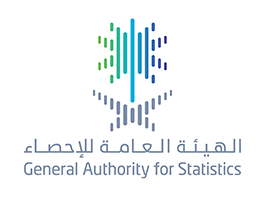
الهيئة العامة للإحصاء تصدر نتائج مسح المال والتأمين 2017م
With total operating revenues of 162 billion SAR
GASTAT Releases the Results of the Finance and Insurance Survey 2017
The General Authority for Statistics (GASTAT) released the results of " Finance and Insurance Survey (2017) " , which conducted annually by the Authority, on its official website www.stats.gov.sa . This survey is an important source for presenting and analyzing the economic data of finance and insurance establishments, such as employees, compensations paid to them, other expenses, revenues and capital formations.
The survey results showed that the number of establishments engaged in the finance and insurance activity increased by 1.14% in 2017, compared to the previous year 2016. However, the total number of establishments engaged in the finance and insurance activities amounted to 6,664 establishments distributed among 14 sub-activities. The sub-activities include banking and holding companies, financial leasing, other loan- granting forms, insurance, financial market management, securities contracts, insurance agents and brokers, money management as well as other activities.
Furthermore, finance and insurance survey results revealed that the total number of employees in this sector reached 113,728 employees, where 82,308 of them are Saudi employees and 31,420 are Non-Saudi employees. Therefore, the number of Saudi employees in finance and insurance establishments increased by 3.32% during 2017 compared to the previous year 2016.
According to the finance and insurance survey results, the total amount paid to finance and insurance establishment's employees for wages, benefits and allowances made up 22 billion and 920 million SAR during 2017.
Additionally, the results of the survey indicated that the operating revenues of the establishments engaged in the finance and insurance activity increased during 2017 by 10.3%, compared to the last year 2016. It should be noted that the total number of revenues reached about 162 billion SAR, while the total number of operating expenses of these establishments was approximately 47 billion and 312 million SAR in the year of 2017.
The finance and insurance survey was conducted based on an evident methodology according to the international standards. The methodology is to study the establishments that carry out their main operations in finance and insurance field in private and public sectors.
It is worth mentioning that the finance and insurance survey is important in providing detailed data on finance and insurance activity at the level of Saudi Arabia. These data contribute to measuring the participation of this activity in the economic development process, in addition to providing the basic data necessary for preparing and composing national accounts.
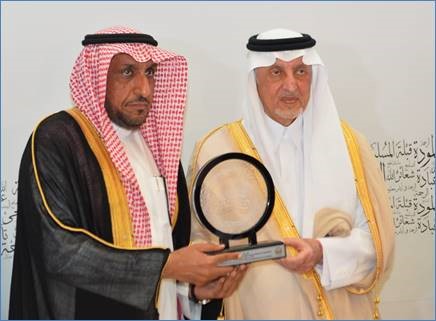
مستشار خادم الحرمين الشريفين يكرم الهيئة ضمن شركاء النجاح
The Advisor of the Custodian of the Two Holly Mosques Honors GASTAT as One of the Success Partners
The Advisor of the Custodian of the Two Holy Mosques, Prince of Makkah Region, Chairman of the Central Hajj Committee, Prince Khaled Al-Faisal has honored the General Authority for Statistic (GASTAT) as one of the (success partners) for the Hajj campaign " Pilgrimage is Cult and Civilizational Behavior 11", under the slogan " Hajj is a message of peace "headed by, Mr. Fahd Al-Fuhaid GASTAT deputy of operations and methodologies.
This was during the inauguration of His Highness the Hajj campaign in Jeddah Emirate, with the participation of 30 entities representing the public and private sectors. Additionally, the Hajj campaign "Pilgrimage is Cult and Civilizational Behavior 11" works on the implementation of its plan in the current season in order to provide peace among pilgrims through four stages.
It is worth mentioning that GASTA works during Hajj Season on the enumeration process of pilgrims coming from inside Saudi Arabia through many statistical centers located over Makkah, Madinah and Jeddah ports, in order to provide statistical data that contribute in supporting decision and policy makers to support development plans.
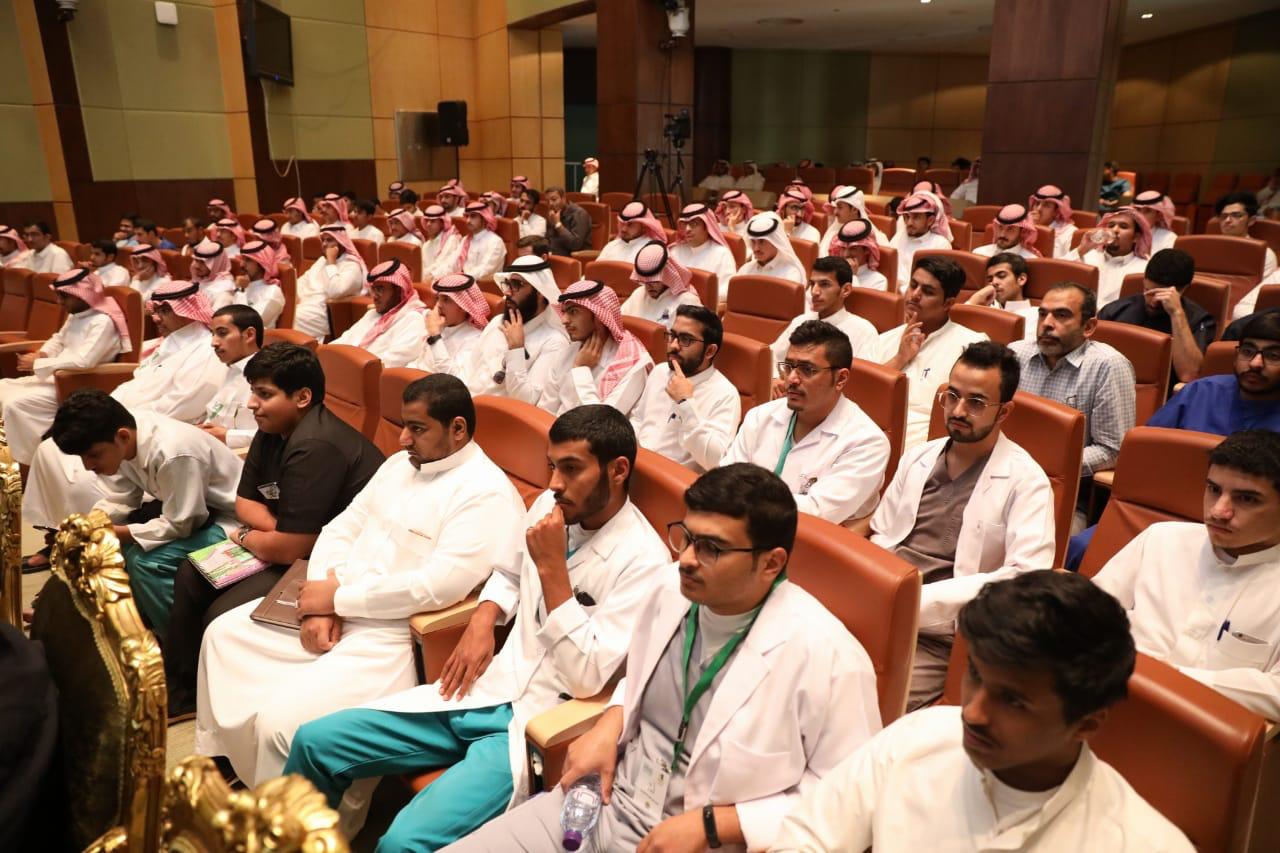
الهيئة العامة للإحصاء تختتم أسبوعها التوعوي لطلاب منطقة الجوف
More than 130 statistical products to support studies and research in the academic sector
GASTAT concludes its awareness week in Al-Jawf region
The General Authority for Statistics (GASTAT) stated that more than 130 statistical products are available for university students, faculty members, and researchers in the economic, social, environmental, cultural, humanitarian, demographic, and agricultural fields. These products will be available on GASTAT official website www.stats.gov.sa with open access, so that they may support the research activity in the Saudi academic sector.
During a lecture that was held on Thursday, Muharram 24, 1440H in Al-Jawf university, GASTAT spokesman, Taiseer Almofarrej said that GASTAT gave researchers, university students, and faculty members an attention by considering them clients who receive services for the purpose of supporting academic activity, as this activity is considered an important component of the statistical sector.
Almofarrej added, the university student has a significant role in raising awareness and interacting positively with statistics which represents the main concern of researchers and academics. Furthermore, the university student can disseminate knowledge among households and society in general, especially when speaking about his/her role in supporting statistical works that target households, as providing accurate and comprehensive data by the household head is an important step of the statistical process that supports developmental plans and programs.
Meeting the university students and faculty members was the last event in the awareness week of GASTAT in Al-Jawf region which was held during the period 20-24 Muharram, 1440H (30 September- 4 October 2018). It is worth mentioning that this awareness week is one of the many statistical awareness programs that GASTAT conducts to raise awareness among all society classes. However, during this week, Al-Jawf university hosted the event of (We share you your academic journey) which targets university students, faculty members, and all university staff. This event presents GASTAT statistical products and services, and explains how to use them to conduct academic studies and research.
On the other hand, more than 560 students representing 70 elementary and intermediate schools visited the “Smart statistician” exhibition which was held in Skaka. The exhibition was organized by GASTAT in cooperation with the General Administration of Education in Al-Jawf region. It aims at clarifying the role of statistics in the life of students, in addition to explaining the statistical concepts and raising the level of students’ awareness. Moreover, it presents the statistical process steps and stages in a simple and scientific way, and enhances the student’s realization of the statistician role. However, the exhibition demonstrates the impact of data accuracy (data provided by the household head) on development, as the student is considered an effective method in raising households’ awareness. The awareness week also included an interactive lecture that was held in Domat Al-Jandal governorate and attended by more than 200 students from different schools.
It is noteworthy that GASTAT, in cooperation with different departments of education, works hardly to educate students with the impact of statistics on development, in addition to the impact of student- either school students or university students- on raising his/her household awareness to provide GASTAT with required data and information over the year.

الهيئة العامة للإحصاء تُجْرِي 9 مسوح ميدانية تستمر حتى مطلع ربيع الثاني1440هـ
Targeting 190,000 households and 40,000 Establishments
GASTAT Conducts 9 Field Surveys that Continue Until the Beginning Of Rabi’ Al-Thani 1440H.
The General Authority for Statistics (GASTAT) called upon all citizens and residents, as individuals or in corporations, to cooperate with the statisticians working in the field in various regions of the Kingdom of Saudi Arabia, who their statistical work will continue until the beginning of Rabi’ Al-Thani 1440H. GASTAT asserted that all information and data will be treated as an information basis which is reliable and can be used by development decision-makers in all relevant government entities that will serve the interest of citizens and residents.
GASTAT spokesman, Mr. Taiseer Almofarrej said that about 3437 statisticians are conducting 9 social and economic field surveys during this period and until the beginning of Rabi’ Al-Thani 1440H. These surveys target about 190,000 households and 40,000 establishments in all (13) administrative regions, including cities and governorate. The results of these surveys are one of the most important pillars when taking decisions that are relevant. The households will be visited in the areas designated to conduct the Household Heath Survey, Food and Drugs Survey, Non-profit Sector Survey (Household), Labor Force Survey, Umrah Survey, estimate of Makkah pilgrims survey, Household Culture and Entertainment Survey, Use of Time Survey and household Economic Survey.
He added that the Household Health Survey for the fourth quarter of 2018 aims to provide data to help health planners to develop, update and follow up the implementation of some health policies and strategies. In addition, it provides data enabling decision makers and health policy makers to conduct regional and international comparisons to develop the health field in Saudi Arabia to Standards, as well as creating a database that can be used as a reliable basis in providing local, regional and international organizations with health information and indicators. Furthermore, it provides accurate data to help monitor the implementation of and assess the impact of certain health programs, such as, programs related to chronic diseases, lifestyles and child mortality, as well as provide accurate data that help identify the disadvantaged groups, and thus contribute to targeting these categories with relevant strategic health initiatives and programs.
In the field of economic statistical surveys, the official spokesman of GASTAT said that the surveys will be conducted on the non-profit sector (households and establishments) in order to identify the size of this sector in reality and its contribution to the Saudi National Product. In addition, it measures the contribution of the community members in volunteer work, and aims at measuring the perceptions of the community members for the role of voluntary organizations and their final outputs in supporting development plans, and supporting decision makers and planners in the process of maximizing the outputs of the non-profit activity helping in achieving the Saudi Arabia’s 2030 Vision seeking to increase the contribution of the charitable sector to the GDP and to increase the number of volunteers.
The Food and Drug Survey aims at identifying data on the quality of medicines in houses, in addition to providing data on the storage and disposal of medicines, as well as the extraction of health indicators of the drugs to meet the local, regional and international requirements in this field. All these field surveys aims at providing accurate and detailed data that helps to know the growth rates of the economic and social activities in Saudi Arabia.
On the other hand, Almofarrej clarified that the general statistics system issued by the ministers’ cabinet, states that all data and information provided by any citizen, resident, or establishment are kept and dealt with confidentiality. He added that the people’s cooperation with statisticians would guarantee the success of these works, and using them in supporting economic and social development accordingly.
It is worth mentioning that GASTAT carries out a large number of field surveys throughout the year, following the international standards adopted in the selection of the sample for these statistical works. It is required that the sample is representative of the society studied and include its characteristics, so that the results are circulated as official statistics. GASTAT immediately publish the surveys after the completion through its official website www.stats.gov.sa
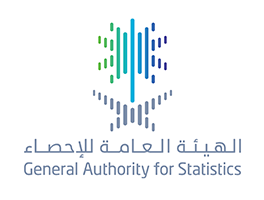
الهيئة العامة للإحصاء: ارتفاع الناتج المحلي بالأسعار الجارية 17.76٪
Based on the second-quarter National Account Indicators Report 2018
GASTAT: GDP rose by 17.76% at current prices
On Sunday 20 Muhrim 1440H / 30 September 2018, GASTAT released National Accounts Indicators Report for the 2nd quarter of 2018 on its official website www.stats.gov.sa The report showed an increase of 17.76% in Saudi Arabia’s GDP at current prices during the 2nd quarter of 2018 compared with the same period last year. The contribution of oil sector to GDP soared to 44.02% at current prices and 1.33% at constant prices compared with the same period in 2017.
Government sector’s contribution to GDP at current prices hit 18.01% and 4.01% at constant prices compared with the second quarter of 2017.
During the second quarter of 2018, private sector recorded an increase of 3.95% at current prices and 1.79% at constant prices, report added.
National Accounts Indicators Bulletin is issued by GASTAT on a quarterly basis and includes tables of GDP by economic activities and regulatory sectors at current and constant prices as well as the contribution of the regulatory sectors and the economic activities, government consumption expenditure, private consumption expenditure, capital formation, exports and imports.
